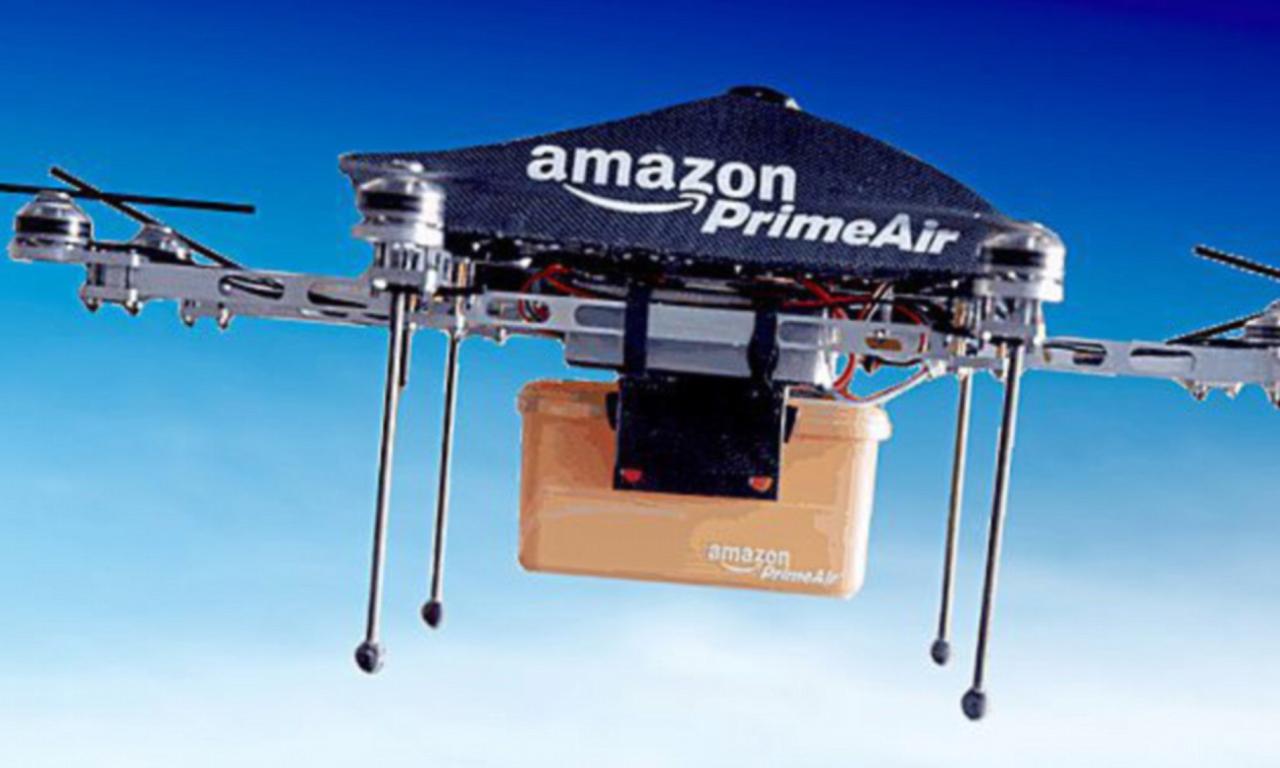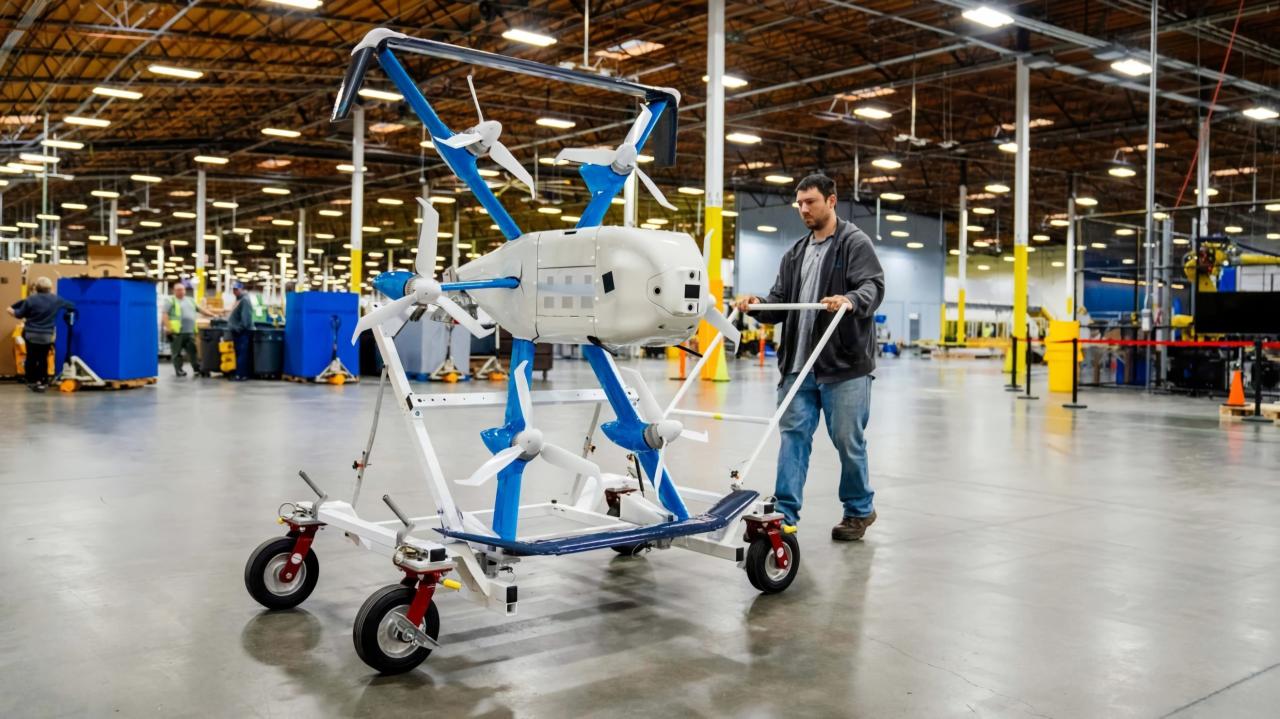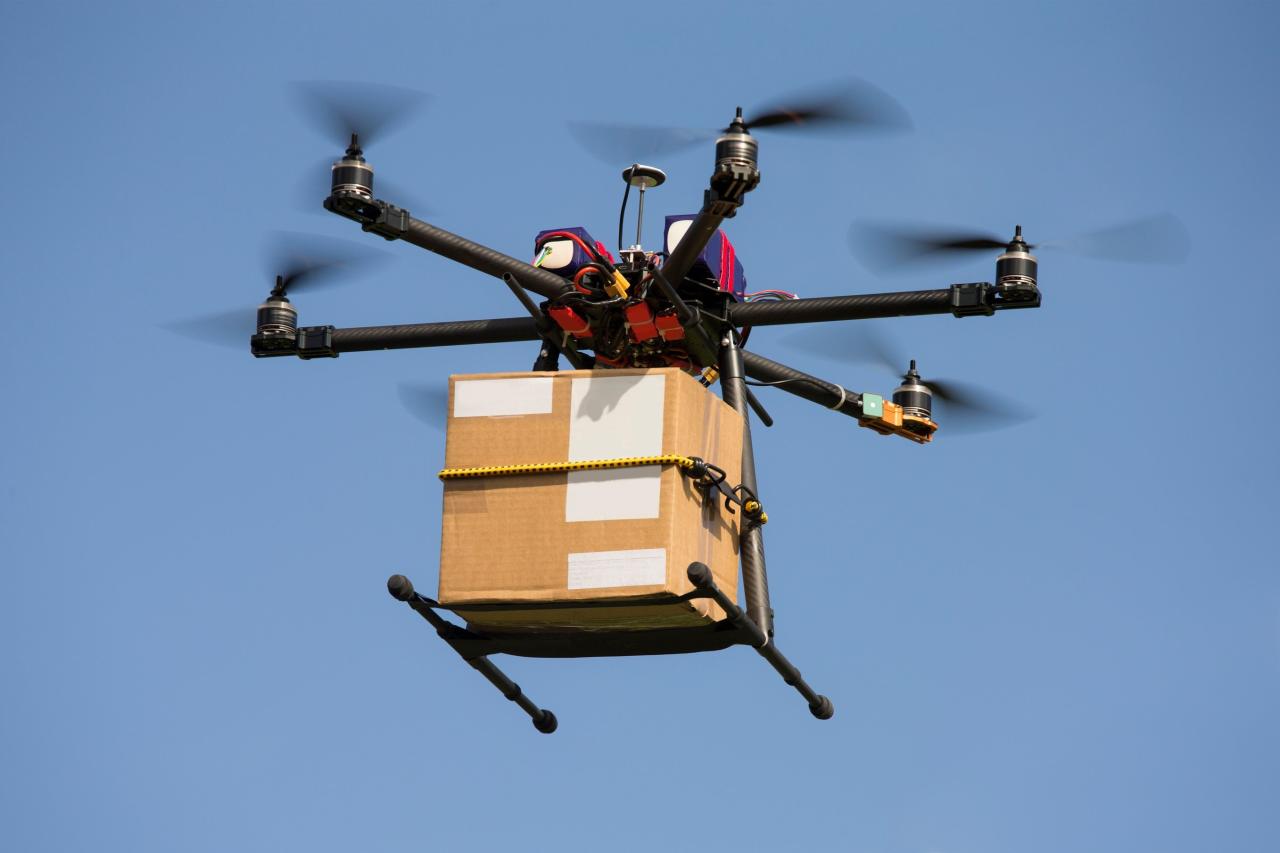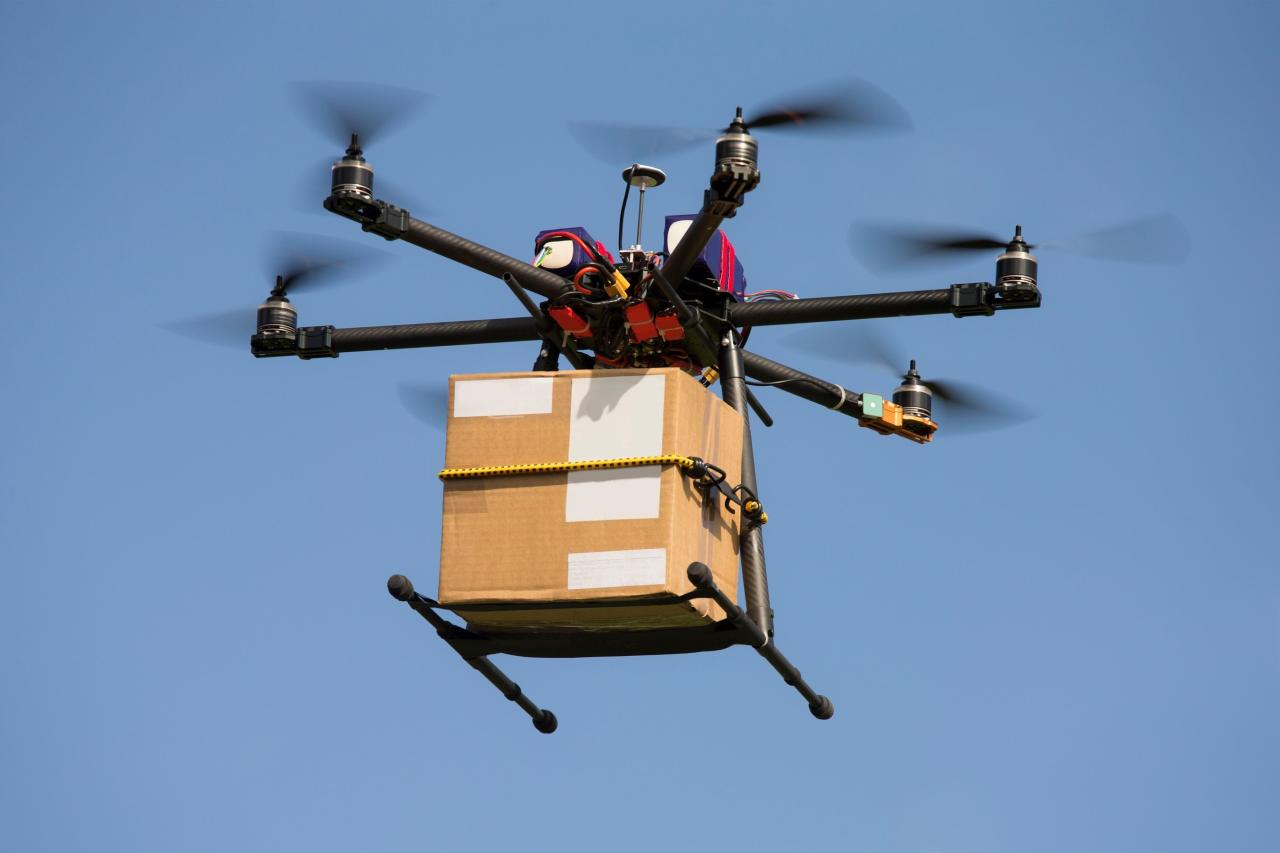Amazon drone delivery locations are rapidly expanding, revolutionizing how we receive packages. This innovative service utilizes a network of strategically placed drone hubs to deliver goods directly to customers’ doorsteps. We’ll explore the current status of this program, the factors influencing location selection, the infrastructure needed, and the impact on both customers and the environment. Understanding these aspects provides a clear picture of Amazon’s ambitious goal to redefine last-mile delivery.
From the technological intricacies of drone flight and package handling to the logistical challenges of airspace management and regulatory compliance, Amazon’s drone delivery program presents a complex yet fascinating case study in technological advancement and logistical innovation. This guide will unpack these complexities, offering a clear and engaging overview of this transformative service.
So, Amazon’s expanding its drone delivery locations, aiming for quicker, more efficient service. It makes you think about the tech involved, though – check out this article about a recent drone show crash to see the potential risks involved in large-scale drone operations. Understanding these challenges is key to making Amazon’s drone delivery program safer and more reliable in the future.
Amazon Drone Delivery Program: A Deep Dive
Amazon’s drone delivery program, Prime Air, represents a significant leap forward in e-commerce logistics. This program aims to revolutionize delivery speed and efficiency, offering customers a unique and convenient experience. This article explores the current status, challenges, and future potential of Amazon’s drone delivery operations, providing a comprehensive overview of this innovative technology.
Current Amazon Drone Delivery Program Status

Amazon’s Prime Air drone delivery service is currently operational in select locations, primarily focusing on a limited geographical scope and a specific range of products. The program’s expansion is a gradual process, influenced by technological advancements, regulatory approvals, and logistical considerations.
- Geographical Scope: Prime Air currently operates in limited areas within the United States, focusing on relatively small, geographically defined areas with favorable conditions for drone operations. These locations are carefully chosen to minimize initial operational complexities and allow for controlled expansion.
- Eligible Goods: The types of goods eligible for drone delivery are restricted to smaller, lightweight packages. These typically include everyday items like books, small electronics, and certain household goods. Larger or heavier items are not yet feasible due to current drone payload limitations.
- Technological Infrastructure: Amazon’s drone delivery system relies on a sophisticated network of technologies. This includes a fleet of autonomous drones equipped with advanced sensors, GPS navigation, and obstacle avoidance systems. A comprehensive ground control system manages and monitors the drones, ensuring safe and efficient operations. Secure package delivery mechanisms are also integrated to protect the contents during transit.
- Timeline of Milestones: The development of Prime Air has involved several key milestones, starting with early testing and development phases, progressing to limited operational launches in select locations, and ongoing expansion efforts. These milestones are marked by technological advancements, regulatory approvals, and strategic partnerships.
Factors Influencing Location Selection for Drone Delivery, Amazon drone delivery locations
Amazon carefully considers several factors when choosing locations for its drone delivery service. The ideal location balances operational feasibility with customer demand and regulatory compliance.
- Key Criteria: Key criteria include population density, local regulations, existing infrastructure (including suitable airspace and ground support), and the overall suitability of the terrain for drone operations. Areas with relatively flat terrain and minimal obstacles are generally preferred.
- Urban vs. Suburban vs. Rural: Suburban areas often present the most favorable conditions initially. They offer a balance between population density and manageable airspace complexity. Urban areas pose significant challenges due to high air traffic density and regulatory hurdles. Rural areas, while potentially less complex in terms of airspace, may present challenges related to lower population density and the distribution of customer orders.
- Impact of Population Density: Population density directly influences the feasibility of drone delivery. High population density areas present challenges related to airspace management and safety, while low population density areas may result in inefficient delivery routes and reduced cost-effectiveness.
- Role of Local Regulations and Infrastructure: Local regulations regarding airspace usage and drone operations are crucial. Existing infrastructure, including communication networks and ground support facilities, are also essential for successful drone delivery operations.
Infrastructure Requirements and Challenges
Establishing a new drone delivery location requires careful planning and consideration of various infrastructural needs and potential challenges. A robust and well-integrated system is essential for safe and efficient operations.
- Hypothetical Infrastructure Plan: A hypothetical infrastructure plan for a new drone delivery location would include strategically located charging stations for the drones, secure facilities for drone maintenance and repair, and a robust communication network for real-time monitoring and control. A dedicated team for drone maintenance and operation would also be essential.
- Airspace Management and Integration: Integrating drone operations with existing air traffic control systems is a significant challenge. This requires careful coordination and adherence to strict safety protocols to prevent collisions and ensure the safe operation of both drones and other aircraft.
- Package Handling and Delivery: Efficient package handling and delivery processes are crucial. This includes secure package loading and unloading procedures, as well as mechanisms for safe and timely delivery to customer locations.
- Potential Obstacles: Potential obstacles include adverse weather conditions (strong winds, rain, snow), challenging terrain (mountains, dense forests), and unexpected events that may disrupt drone operations. Robust contingency plans are needed to address these challenges.
Customer Experience and Impact

The customer experience with drone delivery is a key factor in the success of the program. Understanding the impact on delivery times, costs, and environmental footprint is crucial.
- Customer Experience: The customer experience begins with placing an order through the Amazon app, which identifies eligibility for drone delivery. Once the order is processed, customers receive real-time updates on the drone’s location and estimated delivery time. The drone lands in a designated area, and the package is delivered safely and securely.
- Delivery Times and Costs: Drone delivery offers the potential for significantly faster delivery times compared to traditional methods, particularly for short-distance deliveries. The cost-effectiveness of drone delivery is still evolving, but it could offer competitive pricing for certain types of goods and delivery distances.
- Benefits and Drawbacks: Benefits include speed and convenience. Drawbacks could include limited package size and weight restrictions, geographical limitations, and potential concerns regarding safety and privacy.
- Environmental Impact: Drone delivery has the potential for a lower environmental impact compared to traditional delivery methods, particularly in terms of reduced carbon emissions per delivery, especially for shorter distances. However, the overall environmental impact depends on factors such as drone energy consumption and manufacturing processes.
Future Expansion and Potential

Amazon’s future expansion of its drone delivery network is likely to be guided by a combination of technological advancements, regulatory approvals, and strategic considerations.
So you’re curious about where Amazon’s delivering packages via drone, huh? It’s a pretty cool system! To get a better grasp of the current rollout, check out this helpful resource on amazon drone delivery locations which gives you a good overview of the areas currently covered. Knowing these locations helps you understand the future of speedy, drone-based deliveries and how it might impact you.
- Potential Future Expansion: A textual map depicting future expansion might show a gradual expansion from current operational areas outward, prioritizing areas with favorable conditions and high customer demand. This would likely include major metropolitan areas, once technological and regulatory hurdles are overcome. Expansion would be phased, starting with suburban and less densely populated urban areas.
- Integration with Other Amazon Services: Future expansion could involve integrating drone delivery with other Amazon services, such as Amazon Fresh for grocery deliveries or Amazon Pharmacy for prescription drug deliveries. This would enhance the convenience and utility of the service.
- Long-Term Vision: The long-term vision for Prime Air is to become a significant component of Amazon’s logistics network, offering a fast, efficient, and cost-effective delivery option for a wide range of products and services.
- Technological Advancements: Technological advancements such as improved battery technology, enhanced drone autonomy, and more sophisticated air traffic management systems will play a critical role in expanding the capabilities and efficiency of Amazon’s drone delivery system.
Epilogue
Amazon’s drone delivery program represents a significant leap forward in e-commerce logistics. While challenges remain, the potential benefits – faster delivery times, reduced costs, and a minimized environmental impact – are undeniable. As technology continues to advance and regulations adapt, we can expect Amazon’s drone delivery network to expand further, transforming the landscape of online shopping and reshaping our expectations of delivery speed and efficiency.
The future of delivery is airborne, and Amazon is leading the charge.
So you’re curious about Amazon drone delivery locations? They’re expanding rapidly, and to see what’s possible with drone technology on a larger scale, check out the amazing aerial displays at the florida drone show. Seeing those coordinated drones in action really gives you a sense of the potential for things like widespread, efficient package delivery via drones.
It’s pretty cool to think about how those impressive shows could one day be commonplace, similar to how we see Amazon drones delivering packages around the country.
FAQ Insights: Amazon Drone Delivery Locations
How long does Amazon drone delivery take?
Delivery times vary depending on distance and weather conditions, but generally aim for much faster delivery than traditional methods, often within minutes or hours.
What items are ineligible for drone delivery?
Items that are oversized, fragile, or require special handling are typically ineligible. Amazon provides a list of eligible items on their website.
Is Amazon drone delivery available everywhere?
No, Amazon drone delivery is currently limited to specific locations. Availability is expanding gradually as the program develops.
What happens if the drone encounters bad weather?
Drones are equipped with weather sensors and will automatically return to their base if conditions become unsafe. Delivery will be rescheduled.
